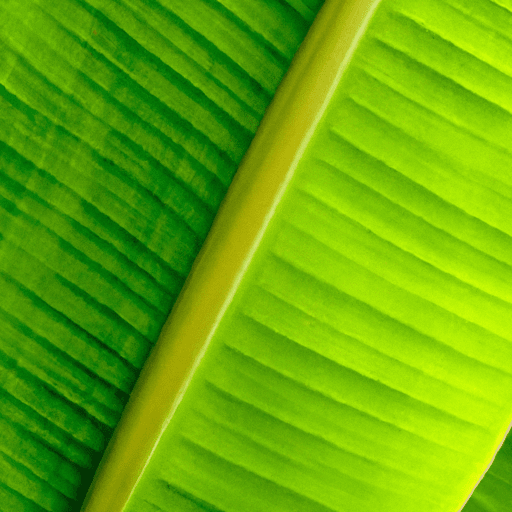Exploring the Wonderful World of Banana Leaf in Cooking
Banana leaf is not just an ordinary leaf; it is a versatile and fascinating ingredient widely used in many countries around the world. In this blog post, we will delve into the captivating world of banana leaf, exploring its taste, common uses in cooking, nutritional value, and uncovering some intriguing history and facts.
The Taste of Banana Leaf
When it comes to taste, banana leaves infuse a subtle and distinctive flavor into the food they envelop. The leaf imparts a mild earthy, grassy, and slightly sweet aroma to the dishes cooked within its embrace. This delicate flavor enhances the overall taste of the food, offering a delightful experience for your taste buds.
Versatility in Cooking
Banana leaves have a long-standing tradition in many cuisines, and their versatility in cooking is truly remarkable. From wrapping food for steaming or grilling to serving as a vibrant platter or even a natural food liner, these leaves are a chef’s dream come true.
Steaming and Grilling
One of the most common uses of banana leaves is for wrapping food before steaming or grilling. The leaves act as a natural moisture barrier, locking in the flavors and ensuring that the food remains tender and juicy. Popular dishes like zongzi in Chinese cuisine and pepes ikan in Indonesian cuisine are just a few examples of the culinary wonders that can be created using banana leaves.
Food Presentation
Banana leaves also serve as a stunning and eco-friendly way to present food. Their lush green color and large size make them the ideal choice for creating an eye-catching platter. From extravagant banquet feasts to humble street food, dishes served on banana leaves have a visually appealing and appetizing effect.
Natural Food Liner
In some traditional cooking methods, banana leaves are used as a liner inside cookware, preventing food from sticking to the bottom and infusing it with delicate flavors. This technique is commonly seen in South Indian cuisine, where foods like idlis and adai (savory pancakes) are cooked on banana leaf-lined pans, resulting in a unique taste and texture.
Nutritional Value
Apart from their culinary benefits, banana leaves also offer a range of nutritional advantages. These leaves are rich in polyphenols, which have antioxidant properties that contribute to overall well-being. Additionally, they contain essential minerals such as potassium, calcium, and magnesium, which are vital for maintaining optimal health.
A Peek into History and Fascinating Facts
The use of banana leaves in cooking dates back centuries, with roots in various cultures around the world. In traditional Indian households, it is believed that cooking on banana leaves imparts a subtle fragrance and medicinal value to the food. Similarly, in Thai cuisine, the use of banana leaves originated from their abundant availability and their ability to keep food fresh and aromatic.
In some cultures, banana leaves hold special significance beyond the kitchen. They are used to make eco-friendly plates, bowls, and even handicrafts. Their biodegradable nature makes them an environmentally friendly alternative to disposable plastic products.
The Journey Continues
Banana leaf continues to enchant culinary enthusiasts and chefs with its unrivaled versatility and ability to elevate dishes to new heights. Whether used for steaming, grilling, or as a natural food liner, the impact of banana leaves on the culinary world cannot be understated.
Next time you encounter a recipe calling for banana leaves, embrace the opportunity to explore the rich flavors and cultural heritage these leaves bring. Step into the magical world of banana leaf cooking, and open your taste buds to a whole new dimension of flavor and experience.
So, why not try incorporating banana leaves into your next culinary adventure? Let us know in the comments below how you unleash the wonders of this remarkable ingredient!
Note: When using banana leaves, ensure they are thoroughly cleaned and edible, as some varieties are strictly for decorative purposes only.
Interesting Facts About Banana Leaf:
Origin: Banana leaves come from the banana plant, scientifically known as Musa. This plant is native to tropical regions of Southeast Asia but is now cultivated in many warm countries around the world.
Common Uses: Banana leaves have been widely used in traditional cooking from Southeast Asia to South America. They serve as natural food wrappers and plates, commonly utilized for steaming, grilling, and baking various dishes. Banana leaves are also employed for serving food in festive occasions, providing an aesthetically pleasing presentation.
Nutritional Benefits: While banana leaves are not consumed directly, they play a role in enhancing the taste and aroma of foods cooked within them. Banana leaves are rich in polyphenols, which possess antioxidant properties. They also contain certain vitamins and minerals like vitamin A, vitamin C, potassium, and iron.
Unique Properties: Banana leaves have several unique properties that make them suitable for cooking purposes. They are large, flexible, and waterproof, which helps retain moisture during the cooking process. Additionally, the leaves release a subtle, pleasing aroma when heated.
Historical Significance: Banana leaves have a long history of use in various cultures. In South India, for example, a traditional meal known as a “sadya” is traditionally served on a banana leaf. In some Asian households, placing food on banana leaves is considered auspicious and has cultural significance during festivals and special occasions. Furthermore, banana leaves have been used in ancient healing practices for their potential anti-inflammatory and antimicrobial properties.
It’s worth noting that while banana leaves are generally safe for cooking purposes, they are not meant to be eaten. They serve as a natural and sustainable alternative to aluminum foil or parchment paper, adding a unique touch to culinary experiences.




Use the share button below if you liked it.
It makes me smile, when I see it.